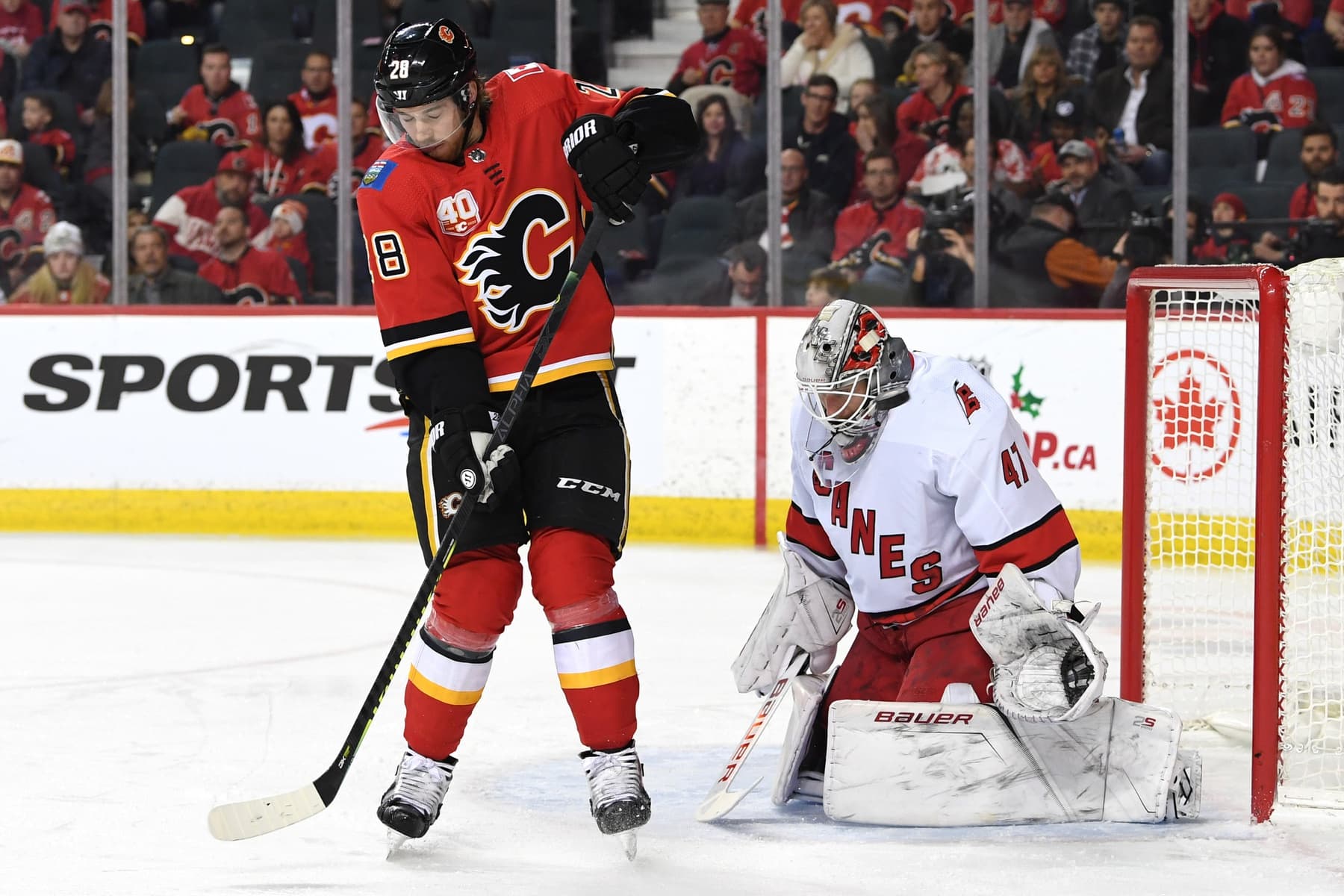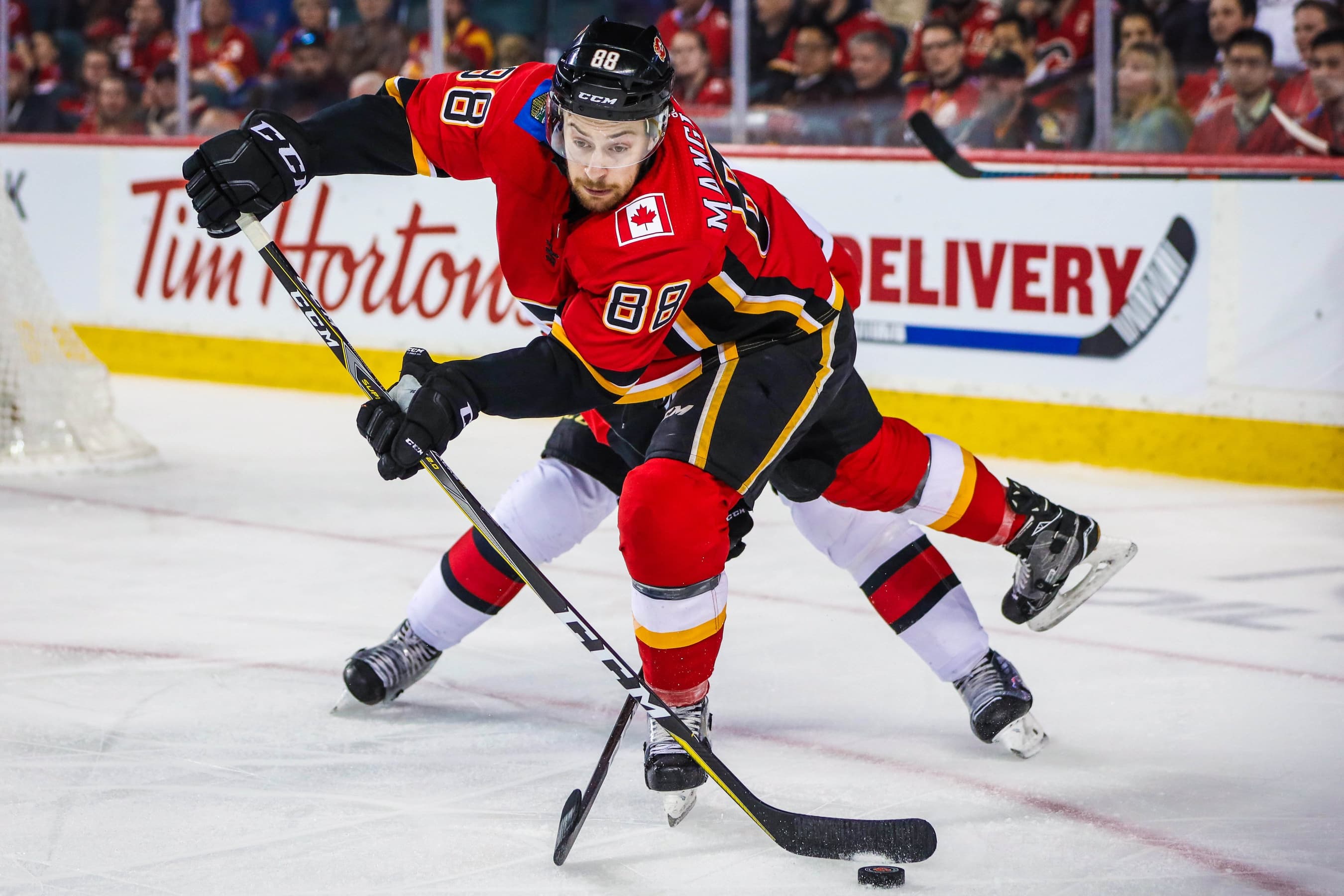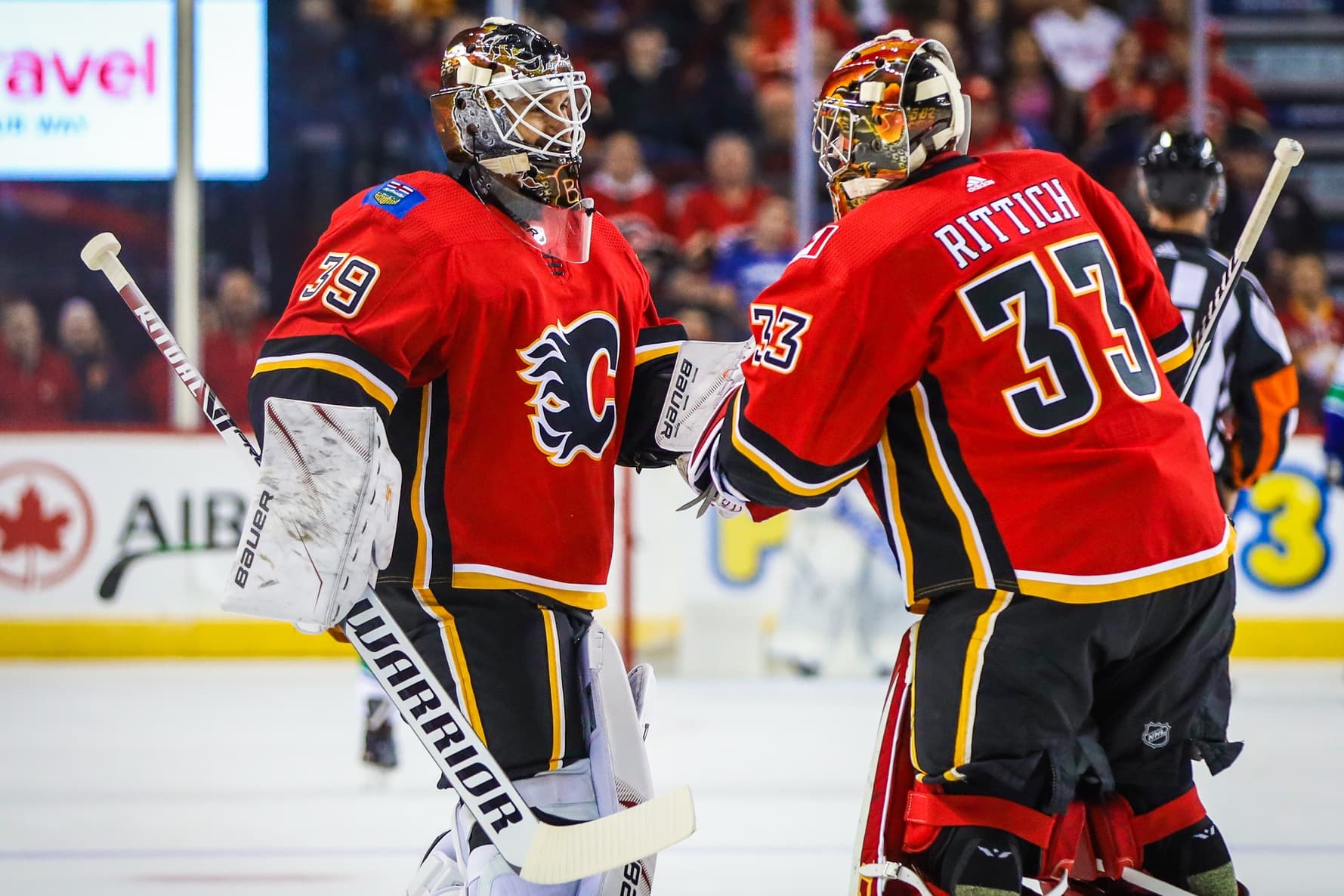Elias Lindholm leads the most important developments of Calgary’s first half

With the Flames at the break, and thus the unofficial midway mark, it’s a good chance to look back at what we’ve seen through 50 games. While frustrating inconsistency has been one of this season’s main themes, we’ve still seen three positive developments. The most important, and the one with the largest future implications, surrounds Elias Lindholm and his move to centre.
Elias Lindholm down the middle
While it has been something hinted at and discussed at different times since Calgary acquired Lindholm in June 2018, we didn’t see him get a long run down the middle until Dec. 2019. It’s my belief this is one of the most significant decisions made by the Flames in decades and one they need to stick with long-term.
Calgary has been searching for a true number one centre since trading Joe Nieuwendyk, and that’s no exaggeration. With no disrespect to Craig Conroy, Daymond Langkow, or Sean Monahan, Lindholm is the team’s first chance at making that happen since the Nieuwendyk deal in 1995.
Lindholm has all the tools to be a number one centre: high-end offensive upside, hockey IQ, strength and a physical element. From Patrice Bergeron to Anze Kopitar, Ryan O’Reilly, and Jonathan Toews, elite Stanley Cup contenders ALL have number one centres. I’m not saying Lindholm is at that level yet, but he’s trending in that direction. Since moving to the middle on Dec. 5, Lindholm’s underlying numbers have been strong. All underlying data courtesy Natural Stat Trick.
| GP | CF% | HDCF% | OZS% |
| 21 | 52.1 | 49.5 | 44.0 |
While routinely taking on the toughest opposition matchups, Lindholm has been the team’s third-best possession player despite a heavy dose of defensive starts. The only two players with better shot rates in that span are Matthew Tkachuk and Andrew Mangiapane, who just happen to be Lindholm’s regular wingers. As for counting numbers, Lindholm has six goals and 15 points in 21 games since moving to centre full-time.
Full disclosure: I’m biased on this one and I’ve been a big proponent of Lindholm as a regular centre going back to last year. Monahan is a great piece and is a perennial 30-goal threat, but in his seventh NHL season, he’s yet to prove he can handle the head-to-head responsibilities of a number one.
The Flames need a centre they can use in every situation, and in any head-to-head matchup, while still getting consistent top-end production. Lindholm is doing just that: he’s producing, taking on the toughest matchups, is on the top powerplay unit, and is a regular penalty killer. I believe Lindholm is just scratching the surface of what he’s capable of as a number one centre, which is good news if you think his $4.85 million cap hit looks good now.
Emergence of Dillon Dube and Andrew Mangiapane

Rasmus Andersson led the way as the most important emerging player last season. This season, the emergence, or perhaps confirmation, of Mangiapane and Dube as bona fide NHL forwards is just as important. Yes, Calgary still looks to be one “top six” winger short of an ideal lineup ahead of next month’s deadline. With the way Mangiapane and Dube are trending, though, there’s a good chance we’ll be thinking of them in that vain in the near future.
Dube and Mangiapane have been two of the team’s most productive forwards this season. Neither Dube (0:11 TOI/G) nor Mangiapane (0:17) see any meaningful time on the power play, so we’ll look at how their five-on-five scoring rates compare to the rest of the team, minimum 20 games played.
| Player | G/60 | Rank | A/60 | Rank | P/60 | Rank |
| Mangiapane | 0.83 | 2nd | 0.73 | 8th | 1.55 | 7th |
| Dube | 0.78 | 3rd | 0.98 | 3rd | 1.76 | 2nd |
Dube’s production is top three across the board, which speaks loudly enough on its own. Mangiapane’s solid production becomes even more impressive knowing he leads the team with a 52.7% possession rate against a 43.8% offensive zone start ratio. Since early December, Mangiapane has also regularly flanked Lindholm and Tkachuk on Calgary’s top head-to-head unit, raising his “degree of difficulty” significantly.
Both Mangiapane and Dube got significant NHL looks last season, with the former being one of the team’s few playoff bright spots. This year they’ve taken it to another level, though, and have proven they belong in the world’s best league on a nightly basis.
A true goalie tandem

The Flames didn’t have a tandem for most of 2018-19 and, let’s be honest, they didn’t have much of one for the first couple months of this season, either. But, as we outlined last week, the narrative surrounding David Rittich and Cam Talbot started to change in early December.
| OCTOBER 3RD – DECEMBER 1ST | DECEMBER 1ST – JANUARY 18TH | ||||
| GOALIE | GS | SV% | GOALIE | GS | SV% |
| DAVID RITTICH | 23 | 0.915 | DAVID RITTICH | 13 | 0.908 |
| CAM TALBOT | 6 | 0.893 | CAM TALBOT | 8 | 0.940 |
When Calgary returns from the break, they’ll have 32 games remaining. Assuming neither Rittich nor Talbot fall off a cliff, there’s no reason the Flames can’t use them as a true tandem for the final two months of the season. This gives the coaching staff a solid body of work to know what they have in both goaltenders.
Assuming they make the playoffs, having the proper amount of data on both Rittich and Talbot is crucial in making a decision on a playoff starter. If they’re pretty sure Rittich is the guy, the final 32 games will confirm that. If it’s truly up in the air, Calgary has two plus months to figure things out. Regardless, the fact this looks like a real tandem down the stretch is a positive development for the Flames.
Recent articles from Pat Steinberg





